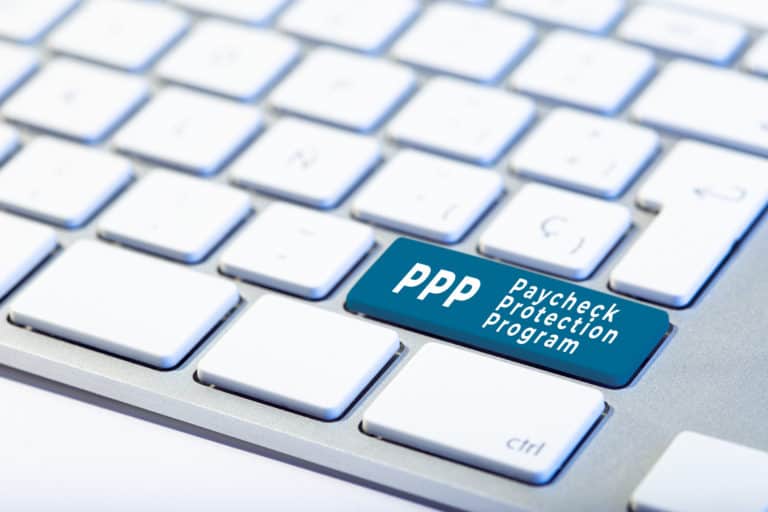Earlier this month the Small Business Administration (SBA) issued a new Paycheck Protection Program (PPP) Interim Final Rule changing the formula self-employed business owners use to calculate maximum loan amounts. The change makes it easier for these applicants to receive meaningful loan amounts by permitting calculations to be made using either net profit or gross income. As part of the update, new first draw (SBA Form 2483) and second draw (SBA Form 2483-SD) applications and corresponding borrower instructions were also released. In addition, the list of eligible expenses and applicant eligibility rules were changed to facilitate broader access. To help clients, prospects and others, Windham Brannon has provided a summary of the key details below.
PPP1 Loan Calculation Formula
Below is a summary of the calculation steps that self-employed first draw loan applicants with and without employees should follow when calculating eligible loan amounts.
Self-Employed No Employees
- Review the 2019 or 2020 IRS Form Schedule C and determine whether to use the net profit or gross income amount. (If both net profit and gross income are zero, or less, then the applicant is ineligible.) Should the amount exceed $100,000 then it will need to be reduced to that amount.
- Calculate the average monthly net profit or gross income by dividing the figure from the prior step by 12.
- Then multiply the average monthly net profit/gross income by 2.5. It is important to note this amount may not exceed $20,833.
- Add the outstanding amount of any Economic Injury Disaster Loan (EIDL) made between January 31, 2020, and April 3, 2020 that is being refinanced.
Self-Employed with Employees
- Calculate 2019 or 2020 payroll by combining the following items, including:1. Select either net profit or gross income minus employee payroll costs, up to $100,000 on an annualized basis as prorated for the period in which payments are made or obligations were incurred. Note if the amount is over $100,000 then reduce it to that amount and if it is less than zero, then set it to zero.
2. Identify the gross wages and tips paid to employees using the Taxable Medicare Wages & Tips, reported for each category, and any pre-tax employee contributions to health insurance or other excluded benefits. Then subtract amounts paid to employees in excess of $100,000 (annualized) and any amounts paid to employees with a principal residence outside the US. - Include employer contributions to employee group health, life disability, vision and dental insurance, retirement contributions and state and local taxes assessed on employee compensation.1. Calculate the average monthly net profit or gross income by dividing the figure from the prior step by 12.
2. Then multiply the average monthly net profit/gross income by 2.5. It is important to note this amount may not exceed $20,833.
3. Add the outstanding amount of any Economic Injury Disaster Loan (EIDL) made between January 31, 2020, and April 3, 2020 that is being refinanced.
PPP2 Loan Calculation Formula
Below is a summary of the calculation steps that self-employed second draw loan applicants with and without employees should follow when calculating eligible loan amounts.
- Self-Employed No Employees – Determine the loan maximum by multiplying the net profit or gross income for 2019 or 2020, which is not more than $100,000, divided by 12, and then multiply by 2.5.
- Self Employed with Employees – Take the sum of one of the following options, up to $100,000, if the total is less than zero then use zero. Use either the net profit reported on the 2019 or 2020 IRS Form 1040 Schedule C or line 7 from the borrowers IRS 1040 Schedule C, minus lines 14, 19 and 26. Then divide the selected total by 12. Multiply this amount by 2.5 to arrive at the loan amount.
Expenses Eligible for Forgiveness
The list of expenses eligible for loan forgiveness has been expanded to include owner compensation replacement and proprietor expenses. For applicants that used net profit to calculate the loan amount, owner compensation replacement is defined as the amount of net profit claimed in the application for 2019 or 2020. For applicants that used gross income to calculate the loan amount, proprietor expenses are the difference between gross income and employee payroll costs. Other qualifying expenses such as covered interest payments, supplier and worker protection expenses remain.
Updated Eligibility Rules
The IFR also made changes to applicant eligibility rules to facilitate wider access, including:
- Felony Lookback Restrictions – The new IFR removes the one-year lookback restriction related to non-financial fraud felonies and affirmed that only the five-year lookback restrictions for felonies involving fraud, bribery, embezzlement, or a false statement in a federal loan application will limit eligibility.
- Federal Loan Delinquency – The rule which renders an applicant ineligible if they have received a direct or guaranteed federal loan, including student loans, that is currently delinquent or in default has been changed. The IFR modifies this criterion to remove student loans from the list of covered federal loans.
PPP Application Extension
Despite all the updates the PPP is scheduled to stop accepting applications on March 31, 2021. However, it is expected there will be an extension as there is currently legislation under consideration.
Contact Us
The changes outlined in the new IFR provide additional flexibility to applicants who were previously excluded due to the loan calculation structure. Given the complexity of the changes, it is important to consult with a qualified advisor about your PPP loan application. If you have questions or need assistance with another issue, Windham Brannon can help. For additional information call us at 404-898-2000 or click here to contact us.


